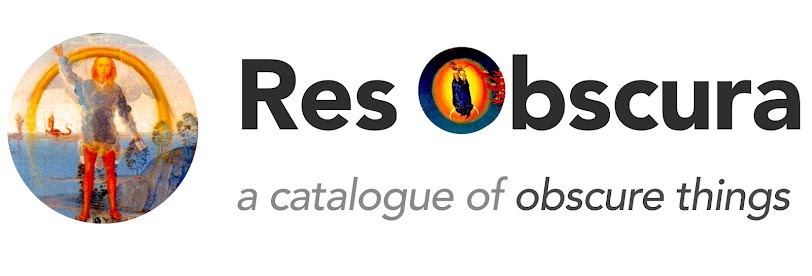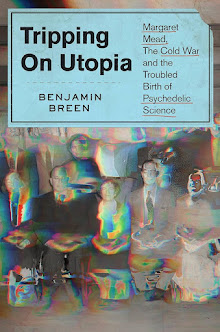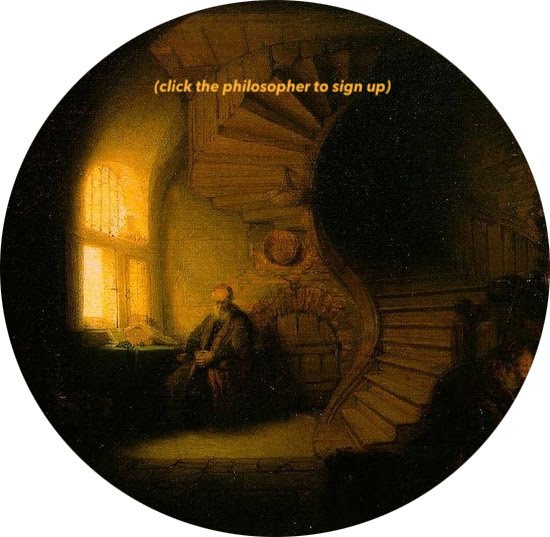Well, this has nothing to do with history, but I thought I'd share this photograph of a huge raccoon I found hanging from my living room ceiling just before dawn this morning! (Note, things are not usually such a mess in this room - the raccoon had been throwing stuff around.)
People in premodern times regularly slept in a shared room with a menagerie of animals, but in contemporary life its rare to find oneself close quarters with a confused bear-like creature. This mama raccoon and I had a tussle shortly after this picture was taken (I had already chased out her baby, who was calmly eating my cat's food!) I got a tiny scrape on my leg; the raccoon escaped, shaken but unharmed. Current wherabouts: unknown.
To make this utterly frivolous post a bit more appropriate to RES OBSCURA, here's what I suspect might be one of the earliest appearances of the raccoon in a European natural history text. Raccoons are native to North and Central America, so they weren't known to the compilers of bestiaries in the Old World until the sixteenth century. Here we harken back to Edward Topsell's History of Foure-Footed Beasts, which I wrote about for my first post on this blog. Topsell describes this beast, rather charmingly, as an "Indian Mouse, Or a Mouse From Some Other Country." It looks to me like a short-furred tropical subspecies of raccoon!
November 18, 2010
November 15, 2010
Photographs of Imperial India
I found these beautiful and evocative photographs of India under British rule on a remarkable website created by a consortium of research libraries called the Digital South Asia Library. The photographs themselves appear to be from the British Library's Oriental and Indian Office Collection. I've added the original captions or collection titles when they've been provided.
To those interested in learning more about the British empire in India, I can recommend Lawrence James' Raj: The Making and Unmaking of British India (2000) and David Gilmour's The Ruling Caste: Imperial Lives in the Victorian Raj
(2000) and David Gilmour's The Ruling Caste: Imperial Lives in the Victorian Raj (2006). The best novel on the subject of the Raj in decline must surely be E.M. Forster's brilliant A Passage to India, though I'm surely no expert...
(2006). The best novel on the subject of the Raj in decline must surely be E.M. Forster's brilliant A Passage to India, though I'm surely no expert...
 |
| "Lord Curzon's first tour in India, 1899" |
 |
| Kabul beggars, c. 1879 |
 |
| Early 1870s, from an "album of cartes de visite portraits of Indian rulers and notables." |
 |
| November, 1912: "Marquess of Reading Collection: 'Dhar and Mandu. Souvenir'" |
 |
| 'India - Groups. 1874'. Dancers and musicians, Kashmir province. |
 | |
| "Views of places proposed to be visited by Their Excellencies Lord & Lady Curzon during Autumn Tour 1902." |
Labels:
India,
Nineteenth Century,
photography,
the Raj,
Victorian,
Visual Culture
November 9, 2010
Paintings from Dutch Brazil
Dutch Brazil, which officially called itself 'Nieuw Holland,' was a short-lived (1630-1654) state in the north-east of Brazil that resulted from the Dutch Republic's aggressive policy of territorial expansion at the expense of the Portuguese colonies in the first half of the seventeenth century -- a policy that also led to the Dutch occupation of Portuguese Angola between 1641 and 1648 and a number of annexations in Portuguese India, including the city of Cochin (see below).
These devestating defeats for the Portuguese crown sprang from a combination of factors -- the Dutch were a nation on the rise in this period, and the Portuguese, junior partners in the Iberian Union of the 1580-1640 period, found themselves with diminished resources and man-power to defend their far-flung empire. The tide began to turn in the 1620s (see my previous post on the Portuguese-Spanish defeat of the Dutch in Bahia, 1625), but the Dutch retained a foothold in Pernambuco and the north Amazon region until the 1650s, as shown by the map below.
One result of these geopolitical misadventures was a fascinating episode in the history of European art and the print culture of early modern natural history. The Dutch government encouraged painters, botanists and other observers of nature to visit the new colonies and record their observations of the strange new tropical lands that had fallen into the hands of the Dutch Republic. The painter Albert Eckhout (1610-1665) was perhaps the most outstanding of these imperial observers. Below are a selection of some of his wonderfully observed paintings of Brazil's flora, fauna, landscapes and peoples. All images are from the National Museum of Denmark in Copenhagen unless otherwise noted, and were painted during Eckhout's travels in Brazil between 1637 and 1644:
The Dutch-Portuguese wars also led to a vacuum of European power in Formosa, present-day Taiwan. Weakened Dutch forces were chased from the island by Chinese military leader and admiral Zheng Chenggong ( 郑成功), known to Europeans as Koxinga, in 1662. The resulting cut-off of European communication with the island allowed the famous eighteenth century impostor George Psalmanazar to invent a series of outlandish falsehoods about Formosa, as detailed in my previous post on this fascinating figure.
For more on these beautiful paintings, see Rebecca Parker Brienen's Visions of Savage Paradise (2007). Charles Boxer's monograph The Dutch in Brazil is unfortunately out of print, but Benjamin Schmidt's Innocence Abroad: the Dutch Imagination and the New World (2006) is a great general survey of Dutch empire and observation in the seventeenth century Americas - highly recommended.
is unfortunately out of print, but Benjamin Schmidt's Innocence Abroad: the Dutch Imagination and the New World (2006) is a great general survey of Dutch empire and observation in the seventeenth century Americas - highly recommended.
These devestating defeats for the Portuguese crown sprang from a combination of factors -- the Dutch were a nation on the rise in this period, and the Portuguese, junior partners in the Iberian Union of the 1580-1640 period, found themselves with diminished resources and man-power to defend their far-flung empire. The tide began to turn in the 1620s (see my previous post on the Portuguese-Spanish defeat of the Dutch in Bahia, 1625), but the Dutch retained a foothold in Pernambuco and the north Amazon region until the 1650s, as shown by the map below.
One result of these geopolitical misadventures was a fascinating episode in the history of European art and the print culture of early modern natural history. The Dutch government encouraged painters, botanists and other observers of nature to visit the new colonies and record their observations of the strange new tropical lands that had fallen into the hands of the Dutch Republic. The painter Albert Eckhout (1610-1665) was perhaps the most outstanding of these imperial observers. Below are a selection of some of his wonderfully observed paintings of Brazil's flora, fauna, landscapes and peoples. All images are from the National Museum of Denmark in Copenhagen unless otherwise noted, and were painted during Eckhout's travels in Brazil between 1637 and 1644:
 |
| "East Indies Fruits." |
 |
| Tupi Indian woman with child. |
 |
| Coconuts. |
 |
| Tupi Indian man. Interestingly, this figure appears to be the model for one of the flanking figures in Piso's Natural History of Brazil. |
 |
| Willem Piso's 1668 Historia Naturalis Brasilia (Natural History of Brazil), hand-colored frontispiece. Compare the figure at left to the Tupi Indian painted by Eckhout above. Piso traveled on the same expedition as Eckhout and fellow painter Frans Post, serving as a physician. |
For more on these beautiful paintings, see Rebecca Parker Brienen's Visions of Savage Paradise (2007). Charles Boxer's monograph The Dutch in Brazil
November 5, 2010
"A Compleat History of Druggs." [Jan. 2011 Update]
"The study of simple drugs is a study so agreeable, and so exalted in its own nature, that it has been the pursuit of the first geniuses of all ages." - Pierre Pomet, Histoire generale des drogues (Paris, 1684).
"A book of high character was published in France at the conclusion of the seventeenth century, the General History of Drugs, by Monsieur Pomet, chief apothecary to the King... In this book M. Pomet expressed great indignation at the spirit of adulteration that had crept into the mummy trade. It was as hard then as now to get one's drugs in any reasonable state of purity." Charles Dickens, Household Words, February 25, 1857
Pierre Pomet's Histoire generale des drogues (1684), translated into English in 1712 as A Compleat History of Druggs, was a manual not only of the substances now identified as 'drugs,' but of a vast range of medicines, intoxicants, narcotics, dyestuffs, spices, foods and animal products. (See my earlier post "A Drug Merchant in Seventeenth Century London" for a sample of what drugs encompassed in the early modern world -- mummies, human skulls, powdered gems and bezoar stones were all in high demand). Although the 17th century witnessed the publication of many guides to drugs and medicines, Pomet's stands out both for its high production values and for its cross-over appeal to a popular reading audience that was hungry for tales of exotic locales, freakish beasts and strange drugs.
Monsieur Pomet (1658-1699) was the chief druggist to Louis XIV, 'the Sun King,' and also maintained a fashionable private practice in Paris as the proprietor of an apothecary's shop. His book represents a breakthrough in European understandings of the new medicines and natural products being opened up by British, Dutch, Portuguese and Spanish expansion into the global tropics. The illustrations, in particular, are an advance on previous works. I plan to make a more in-depth post in the future about early modern theories of drugs -- which were connected closely to magic, spirituality and climate -- but for now I'll just post some of the most striking of the book's illustrations.
As an aside, I came across two interesting things while researching this post. The first, the bizarre and perhaps mythical 16th century Chinese medicine known as "Mellified Man" (in which one voluntarily overdoses on honey, is buried in same, and then is sold as a medicine) is a topic that I will probably devote a full post to in the months to come if I can find any further information. The second is a wonderful website called "Strange Science" which has a remarkably comprehensive archive of images of strange mammals from the Neolithic to the present here.
For scholarship on Pomet, see Sandra Sherman's "The Exotic World of Pierre Pomet's A Compleat History of Druggs" in Endeavor and an essay by Jordan Kellman in the December 2010 of the excellent new journal Atlantic Studies entitled "Nature, networks, and expert testimony in the colonial Atlantic: The case of cochineal." Those interested in early modern unicorn lore should check out this 2006 BibliOdyssey post on the subject.
"A book of high character was published in France at the conclusion of the seventeenth century, the General History of Drugs, by Monsieur Pomet, chief apothecary to the King... In this book M. Pomet expressed great indignation at the spirit of adulteration that had crept into the mummy trade. It was as hard then as now to get one's drugs in any reasonable state of purity." Charles Dickens, Household Words, February 25, 1857
 |
| Title page of the first English edition, 1712. |
 |
| Pomet's portrait, from the French edition. |
 |
| A standout plate from the English translation featuring unicorns. As the captions note, most hail from John Johnston's 1657 Historiæ Naturalis de Quadrupedibus (see here for more on this most interesting work of early modern animal lore.) |
 |
| Mandrake, Cork and the rare 'Peruvian Bark,' i.e. cinchona, which contains quinine. |
 |
| Another view. |
For scholarship on Pomet, see Sandra Sherman's "The Exotic World of Pierre Pomet's A Compleat History of Druggs" in Endeavor and an essay by Jordan Kellman in the December 2010 of the excellent new journal Atlantic Studies entitled "Nature, networks, and expert testimony in the colonial Atlantic: The case of cochineal." Those interested in early modern unicorn lore should check out this 2006 BibliOdyssey post on the subject.
Labels:
Drugs,
Medicine,
Mummies,
Pierre Pomet,
Print Culture,
Seventeenth Century,
Unicorns
November 4, 2010
Image of the Week 6: "New York's New Solar System"
As leader of the Tammany Hall political consortium at the turn of the twentieth century, Richard Croker (1843-1922) was once the most powerful man in New York City. He received bribes from numerous brothels, saloons and other businesses during an era of enormous growth for the city due to European immigration, and he oversaw criminal activity in the Lower East Side during the rise of modern organized crime.
This topic/time period is well outside my ken as an historian, but I happened across this amazing image of Croker and thought I would share it. Its worth viewing full-size - at over 7 megabytes, the image is detailed enough that you can make out the writing on the newspaper's clutched by Croker's satellites! (Who, by the way, are clearly caricutures of real people, though I'm far too ignorant to identify them. Perhaps someone who reads this will know more?)
This topic/time period is well outside my ken as an historian, but I happened across this amazing image of Croker and thought I would share it. Its worth viewing full-size - at over 7 megabytes, the image is detailed enough that you can make out the writing on the newspaper's clutched by Croker's satellites! (Who, by the way, are clearly caricutures of real people, though I'm far too ignorant to identify them. Perhaps someone who reads this will know more?)
Subscribe to:
Posts (Atom)



















